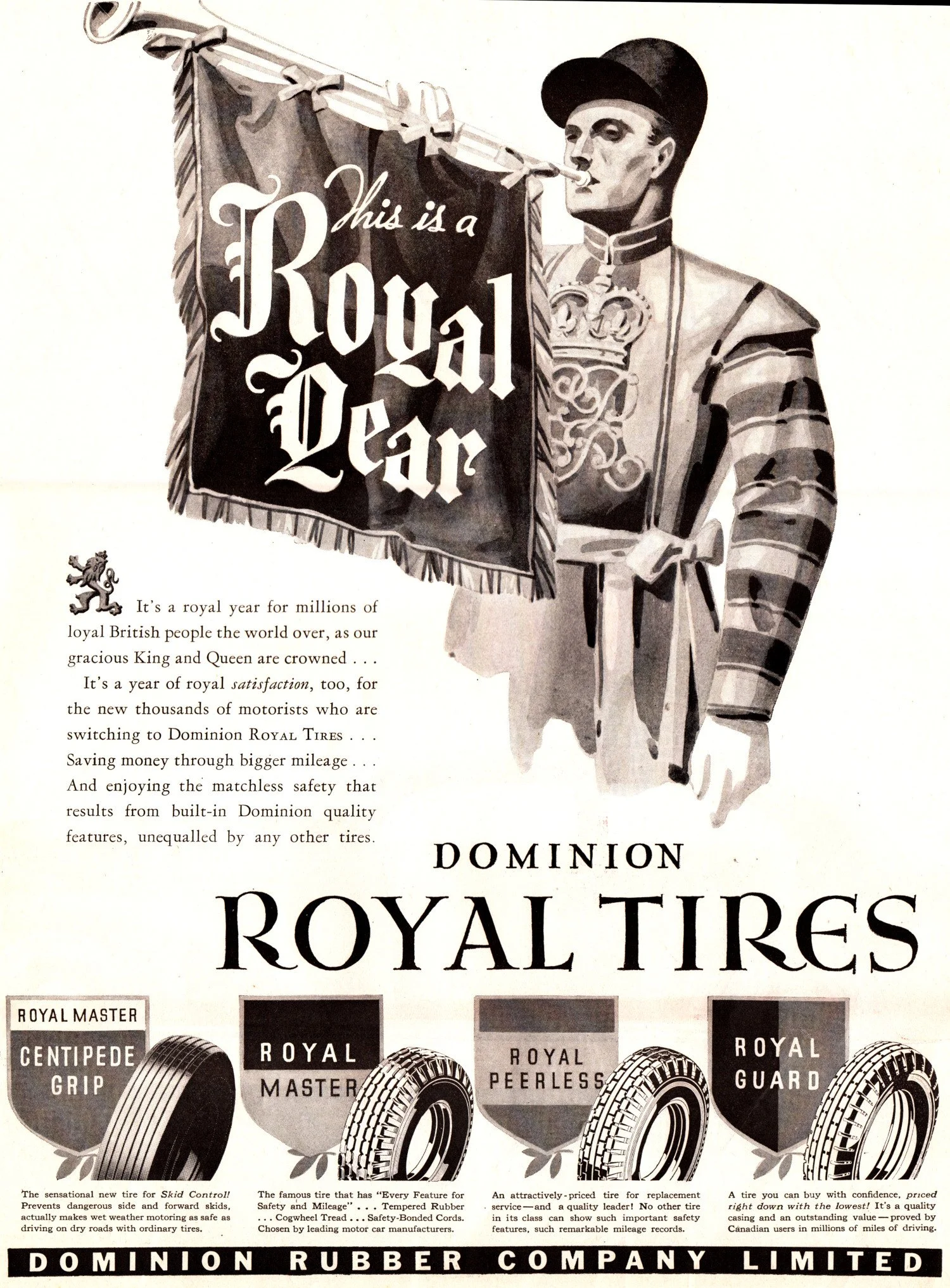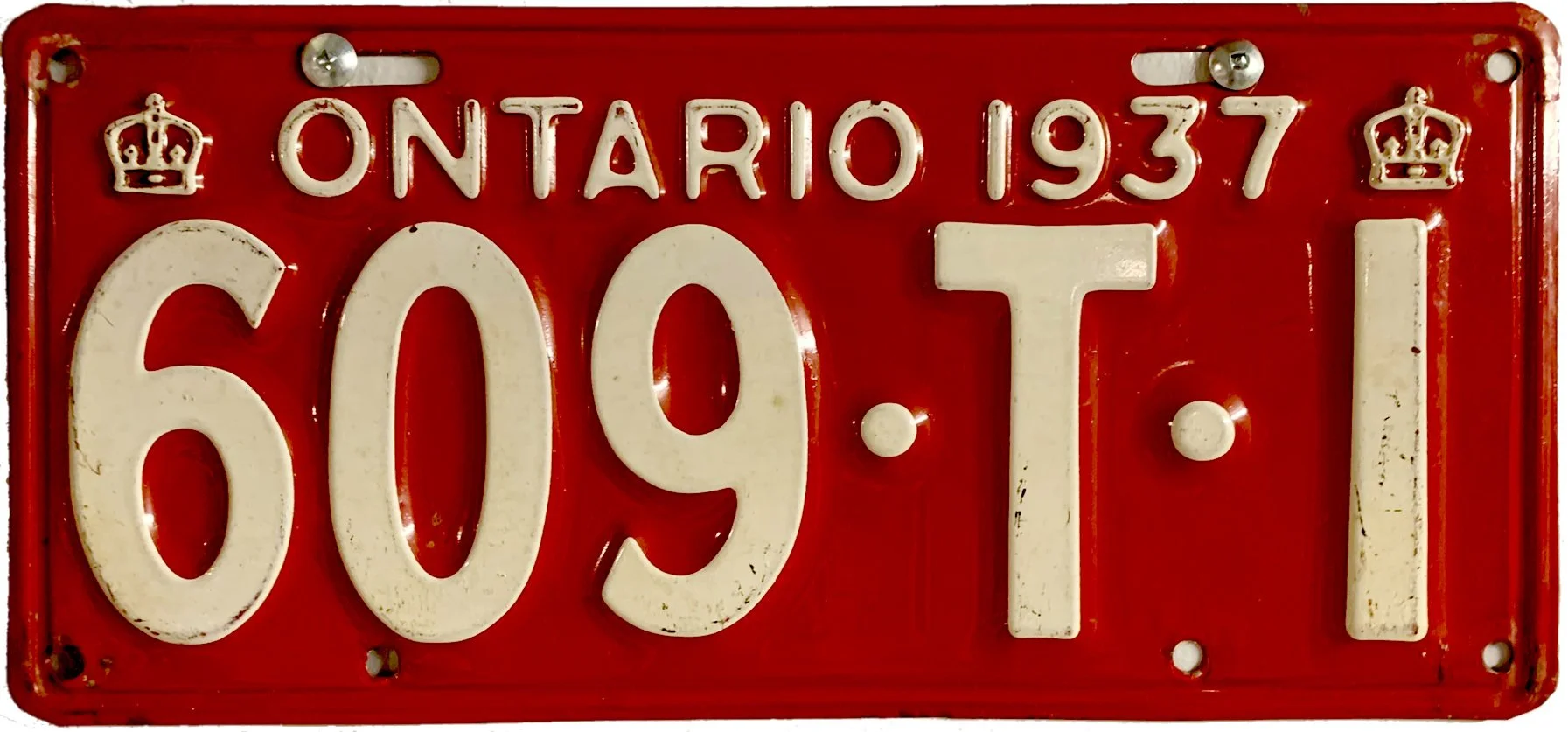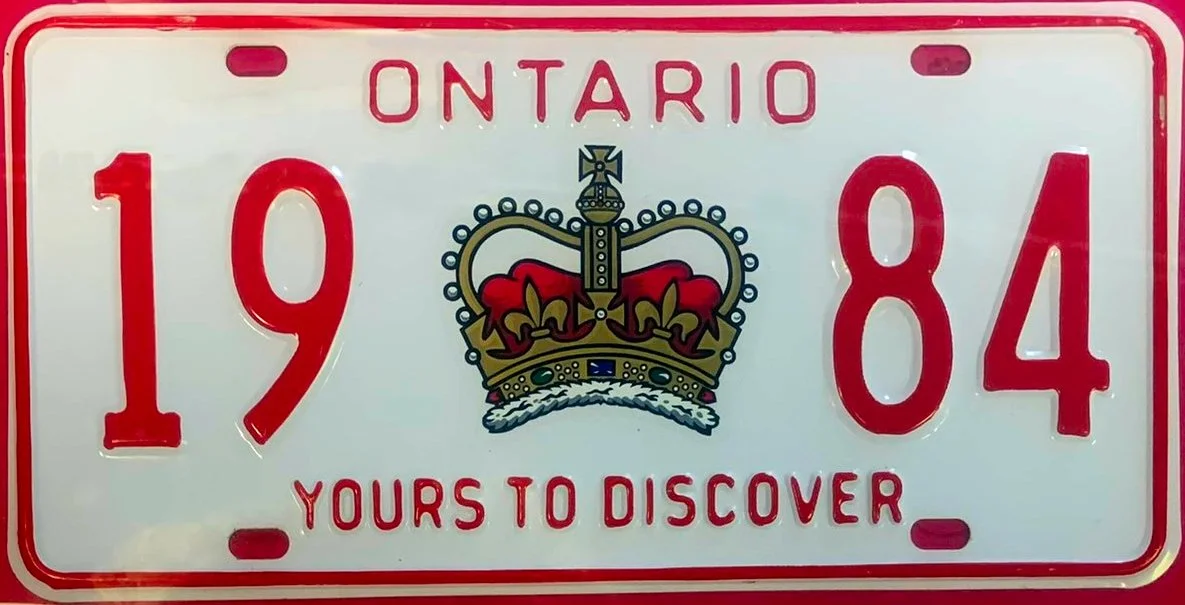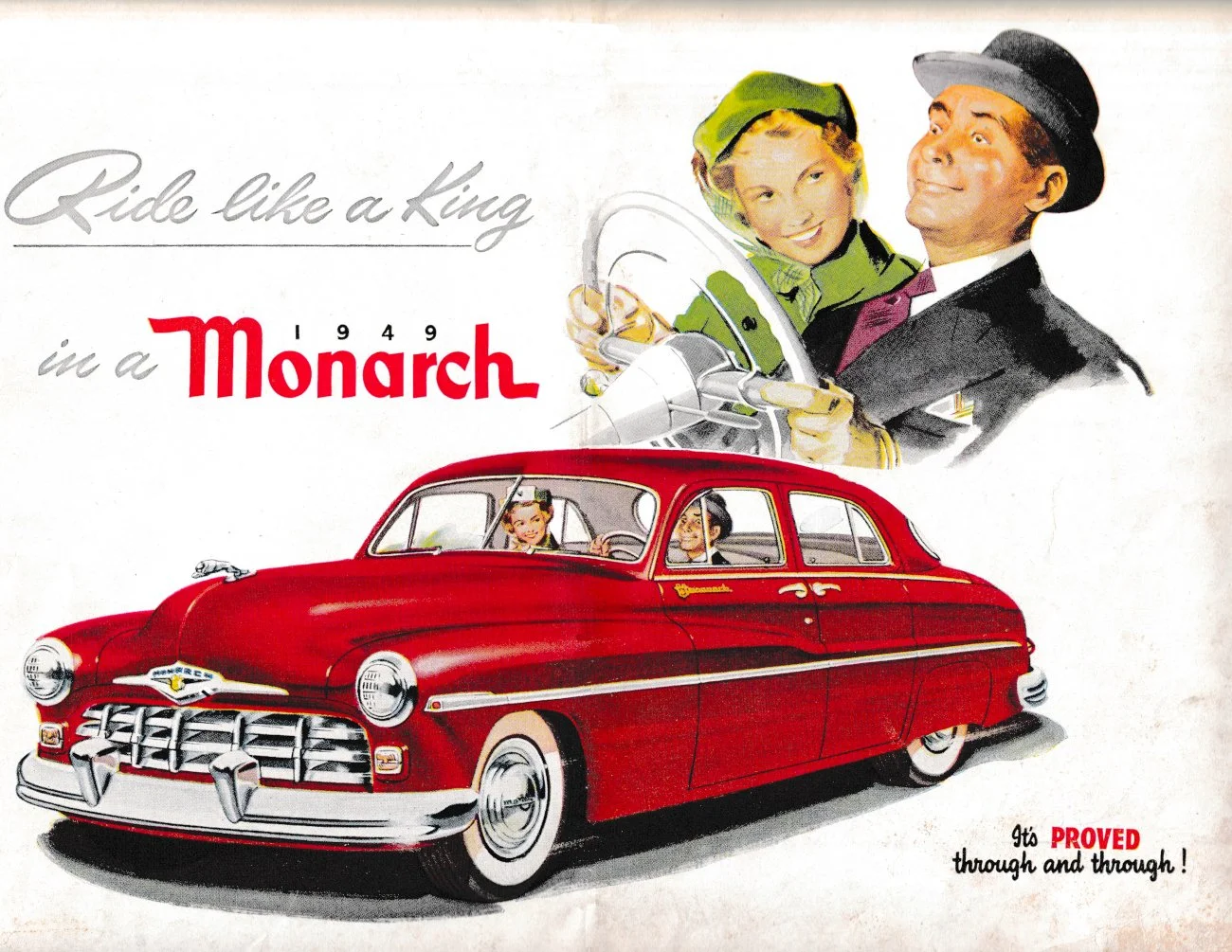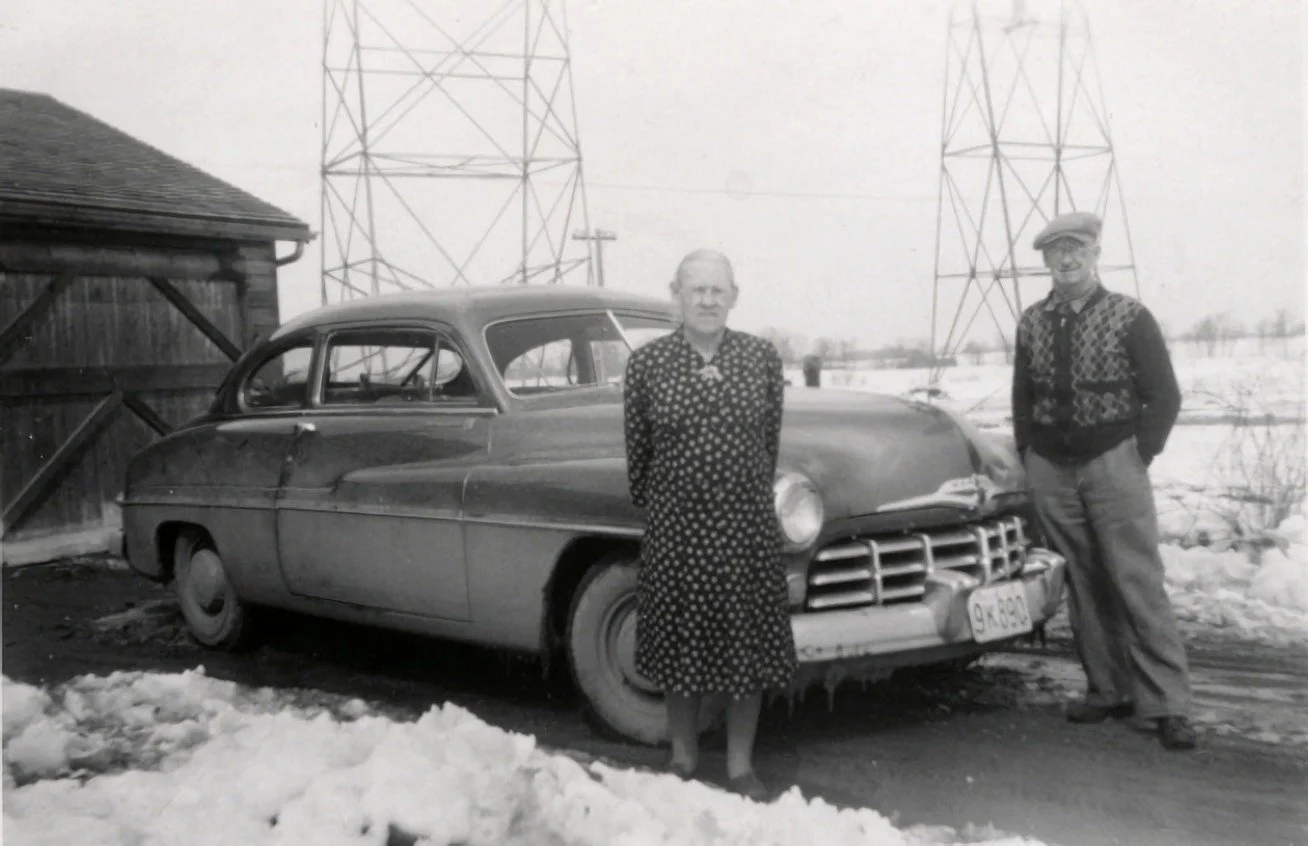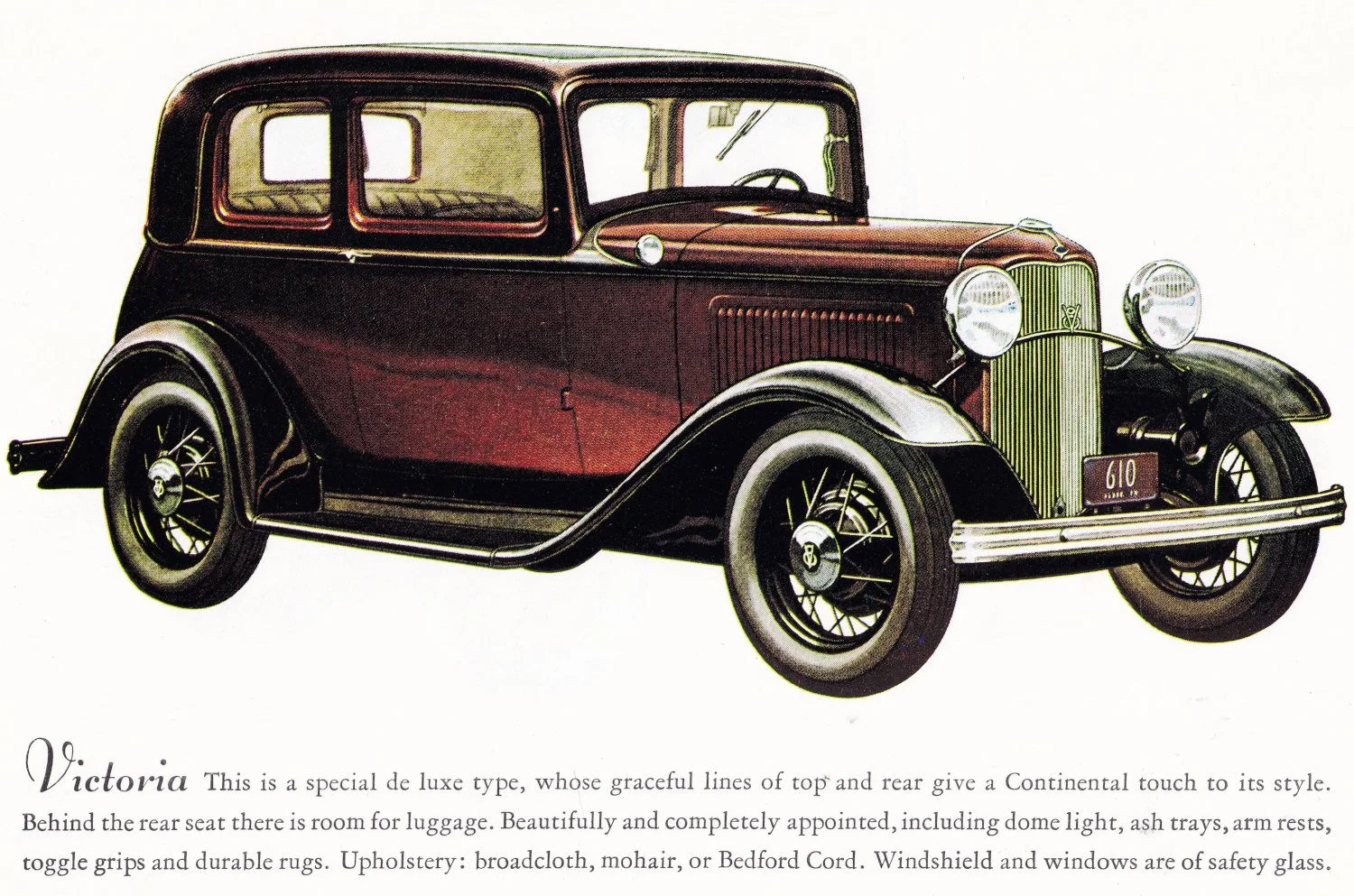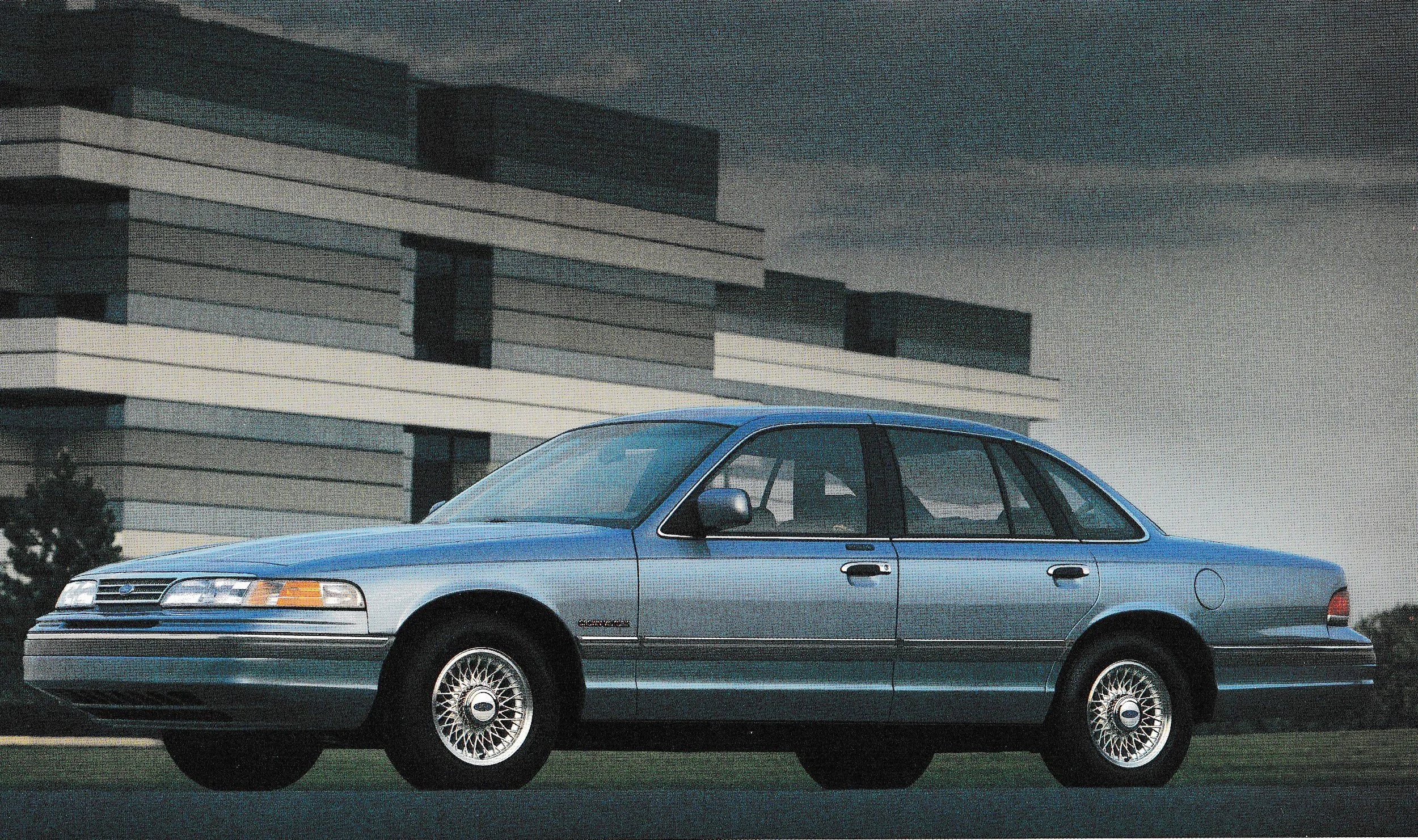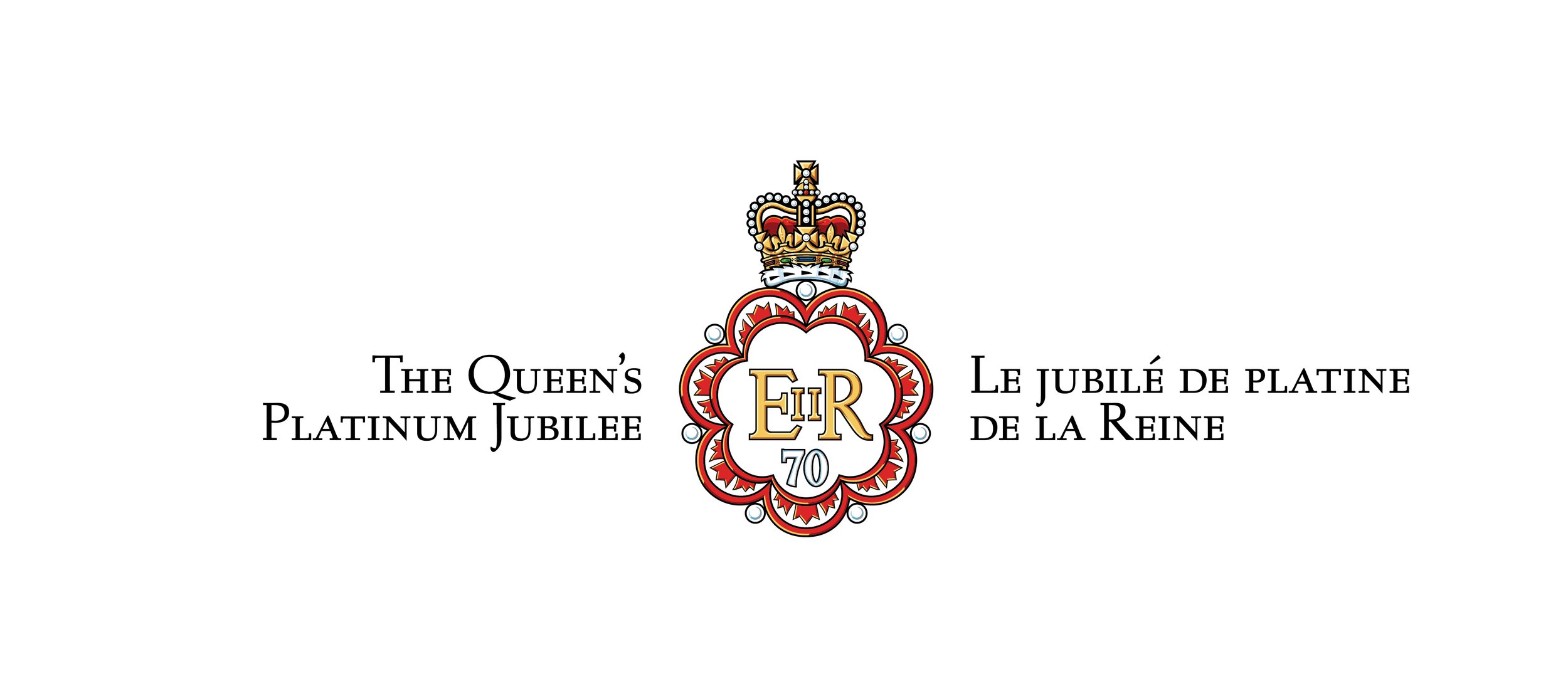
Royal Symbols and the Canadian Car
Connections to Canada’s royal heritage show up in all aspects of the auto industry. A 1937 ad from Montreal-based Dominion Rubber Company, celebrating the coronation of King George VI.
Collection of the Canadian Automotive Museum
Canada has had a monarchy for much longer than it has had motor vehicles, but the two are inextricably linked. For decades Canadians have been designing, building, and driving cars with royal names and associations, reminding the citizens, first of the Empire and then of the Commonwealth, of their connections to a proud and ancient tradition.
Canadian history has seen dozens of “royal” vehicles, from the purpose-built models made for state tours by kings and queens to everyday cars and trucks. This exhibit explores just a few of the more notable and enduring Canadian cars with royal symbols.
Royal Symbols, ontario roads
It is nearly impossible to go for a drive in Ontario and not see any royal symbols. They turn up in a great many places on the province’s roads and streets.
Crown Plates
The British Crown is imprinted on every Ontario licence plate – and has been for more than 85 years. Licence plates with the image of a crown on them were first used in 1937, in honour of the coronation of George VI, and remain standard on Ontario plates to this day, with the exception of a brief (and unpopular) hiatus in 1951–52. Some 1952 plates had crowns, but due to metal shortages resulting from the Korean War only small numbers were produced.
A 1937 Ontario licence plate, with the smooth-topped King’s Crown.
Collection of the Canadian Automotive Museum
A special 1984 collectable licence plate, made in honour of that year’s Royal Visit.
Collection of the Canadian Automotive Museum
The crown seen on modern licence plates, with its two curved domes and cross-shaped centrepiece, is a representation of the queen’s crown, worn by female English monarchs. During the reign of George VI, Ontario plates used the king’s crown, which has downward-sloping sides and no central cross.
Original signage for the Queen Elizabeth Way, circa 1940. Major Ontario highways are still marked by shield-shaped icons topped with a crown.
Wikimedia Commons
Crowned Roads
The standard emblem for the major 400-series highways that criss-cross Southern Ontario is the queen’s crown, in use since the 1940s. The first “crowned” highway was the Queen Elizabeth Way, connecting Toronto and Buffalo, New York, which was inaugurated by Elizabeth (the Queen Mother) during the 1939 Royal Tour. The tradition of using crowns on the province’s major highways persists to this day.
Monarch (Ford canada)
The Monarch’s crown branding and its slogan “Ride like a King in a Monarch”, were instantly recognizable to Canadians for much of the 1950s.
Collection of the Canadian Automotive Museum
1949 Monarch: The Stats
Produced in Talbotville, Ontario, Canada
Engine: Side-valve V-8 / 255 cu in. / 110 Horsepower
Top Speed: Approx. 133 km/h
Wheelbase: 118 in.
Weight: Approx, 3,500 lbs
1949 Price: $ 2,595 CAD
One of the most distinctive high-end Canadian cars of the postwar years, the beautifully chromed Monarch, was an unusual product of Ford Canada. The Monarch was not a Ford; it was a Monarch: its own entire marque, or brand, of car, with its own elegant models such as the Richelieu, Lucerne, Sceptre, and Meteor. The Monarch is also emblematic of the strange and sometimes confusing way in which cars were built and sold in Canada after the Second World War.
Badge Engineering
In the late 1940s Canada did not have a car market big enough to support individual dealerships for different brands of cars. Most companies, Ford included, separated their specific brands into different dealerships. Within the Ford Motor Company, some dealerships sold Fords, while others sold higher-end Lincolns and Mercurys. This meant that the company did not have a high-end car to sell at Ford dealerships.
At the same time, Canadian-sold cars were expensive; huge import taxes meant that Canadian buyers could be paying 20 per cent more than their U.S. counterparts, often for vehicles with fewer special features or options.
Ford decided to create a “new” car from whole cloth, one that was inexpensive enough for Canadian buyers but fancy enough to be high-end. The end result was a rebranded Mercury auto. With unique trim and design features, it used parts from a variety of other Ford cars – and this became the Monarch. The name was chosen in recognition of the wave of pro-British sentiment sweeping the Commonwealth in the aftermath of the Second World War.
An unidentified couple pose with their Monarch in St. Catharine’s, Ontario, March 1958.
Collection of Charlie Beesley
Simple and flashy
The Monarch was visually almost identical to contemporary Mercury 8s and Montereys, but with the addition of extra chrome trim and prominent crown icons on the sides, rear, and hubcaps.
Collection of the Canadian Automotive Museum
Depending on their model year, Monarchs could be classified as either mid-range high-end cars or high-end mid-range cars. Regardless, they were heavily decorated and visually distinctive, with chrome trim, leaping-lion hood ornaments, and distinctive lion’s-head hubcaps. Internally, nearly all of the Monarchs were basically Mercurys, using last-generation engines and transmissions that were simpler to produce in Canada. Still, this simplicity kept them in production for a long time; Monarchs were built in Oakville, Ont., between 1946 and 1961.
The Dodge Regent and its upscale cousin Dodge Custom Royal were among the most popular cars on Canadian roads between 1956 and 1957.
Collection of the Canadian Automotive Museum
Dodge Regent
1957 Dodge Regent: The Stats
Produced in Windsor, Ontario, Canada
Engine: Inline 6 / 250.6 cu in. / Approx. 132 Horsepower
Top Speed: Approx. 130 km/h
Wheelbase: 118 in.
Weight: 3,580 lbs
1957 Price: $ 2,764 CAD
A Regal Plodge
In the mid-1950s, Chrysler Canada, owners of Dodge, was looking for ways of offering a greater variety of cars in the Canadian market, but without increasing costs. The solution was fitting a Plymouth car body with the front end of a Dodge – thus creating a ‘new’ vehicle without using any new parts. Drivers soon dubbed it a ‘Plodge.’ The Dodge Regent, a classic Plodge and Canada’s most popular car in 1956, was presented as a budget option, offering “loveliness and low cost, all in one package!”
Comfortable but Unrevolutionary
Regents were designed as a simple, conservative-looking family car. One of the design requirements for what became the model was that it had to allow a grown man wearing a hat to sit comfortably upright in the front seat. Still, the cars came with a variety of unusual add-ons. While Canadians did not have access to the “Highway Hi-Fi” built-in record player, they could get Powerflite, an automatic transmission – with the driver pushing buttons to shift gears.
As a safety measure, the buttons for gears were laid out in the order of Reverse-Neutral-Drive-Low, so that drivers could not accidentally shift into reverse. This layout, with a Park option added, eventually became the standard for North American gear shifts.
The Museum’s Regent
Originally owned by Lillian Reid of North York, Ont., the Canadian Automotive Museum’s Regent is in nearly pristine running condition and still has its original two-tone black-and-white interior. The vehicle’s low-reflection paint job is not quite original; it was repainted for use in the 1987 movie The Big Town starring Matt Dillon and Tommy Lee Jones. J.F. Innes donated the car to the Museum in 1992.
Ford Crown Victoria
The Crown Vic has been an iconic vehicle for generations. Although seldom seen as a personal vehicle, it provided the North American police car design for more than 30 years, and hundreds remain in service in that role across Canada. The roots of the Victoria name in motoring are surprisingly deep, extending all the way back to 19th-century France.
A Victoria carriage from the 1880s, owned by James Gordon of Halifax.
Collection of the Nova Scotia Archives
The Crowned Victoria inspires a Carriage
The use of the name “Victoria” to refer to a type of vehicle began in France around 1844, when a particular style of tall, narrow, open-topped carriage with a folding convertible roof became popular in French society. Why this design was called a Victoria is unclear, but given that the young, beautiful, and recently married English monarch was the talk of Europe, it is no surprise that a stylish carriage would be named after her. By the 1870s Victorias were the must-have mode of transportation for any fashionable young woman in England. The style spread to Canada, where the vehicles were used for touring in parks in the summer months.
Victorias as Cars
By the 1920s, the idea of a Victoria as a stylish two-seater vehicle had evolved into a distinct type of motor car. Victoria Coupes were usually two-door cars, but thanks to a folding front seat they had room for between three and five people. Ford, Lincoln Motors, and Packard all produced Victorias in the 1930s.
A 1932 Ford Victoria Coupe, a classic example of that style of car; note the combination of two doors with a full back seat.
Collection of the Canadian Automotive Museum
Ford would resurrect the name, but not the design, for the Fairlane Victoria in 1955–56. These vehicles had a built-in skylight roof, imitating the “convertible” style of the original Victoria carriages. A wide chrome band “crowned” the line between the skylight and the rest of the roof. The Ford Crown Victoria was born.
The Era of the Crown vic
An advertisement for 1994 Crown Victorias. Apart from improved streamlining, the Crown Vic would go through relatively few visual changes in its 30-year production lifespan.
Collection of the Canadian Automotive Museum
A Royal Canadian Mounted Police (RCMP) Crown Victoria Police Interceptor on Parliament Hill in Ottawa, 2014. Crown Vics remain common police cars across Canada.
Collection of Michael Burns. This image has been colour-corrected.
Ford would return the Crown Vic to production in 1979, and this time the design would stick for more than 30 years. The new car was the high end of Ford’s baseline models, built on the full-size Panther chassis. The end result was remarkably enduring. Large, heavy, and fitted with a powerful V8 engine, the Panther-based Crown Vic would go through relatively few major changes between 1979 and the end of production in 2012. The vast majority of these vehicles were Canadian-made, at the Ford plant in Talbotville, Ont.
2011 Crown Victoria: The Stats
Produced in Talbotville, Ontario, Canada
Engine: Flex-Fuel V8 / 281 cu in. / 220 Horsepower
Top Speed: 209 km/h
Wheelbase: 114.6 in.
Weight: 4,100 lbs
2011 Price: $ 35,499 CAD
The Crown Vic was one of the last platform chassis cars built by Ford. Although the design was somewhat outdated, it had major advantages. Crown Vics were inexpensive to repair and maintain, and it was easy to swap out body panels or update the visual design of the vehicle without needing to make major changes under the hood. The cars were a natural fit as fleet vehicles, such as taxis, limousines, and, most famously, police cars.
The Police Interceptor
Between 1997 and 2013, the Ford Crown Victoria Police Interceptor was the most common police car in Canada and the United States. Fitted with bulletproof Kevlar doors, more powerful engines, and a transmission that allowed them to run safely at speeds well in excess of 200 kilometers per hour, they became an enduring icon of North American law enforcement. The final Canadian Police Interceptor rolled off the line of the Talbotville plant on Sept. 5, 2011.
Visiting the museum with family? Try our platinum jubilee family activity book!
Thank you to the Department of Canadian Heritage through the Celebration and Commemoration Program, 2022 Platinum Jubilee of Her Majesty Queen Elizabeth II Component, for sponsoring this exhibit.
